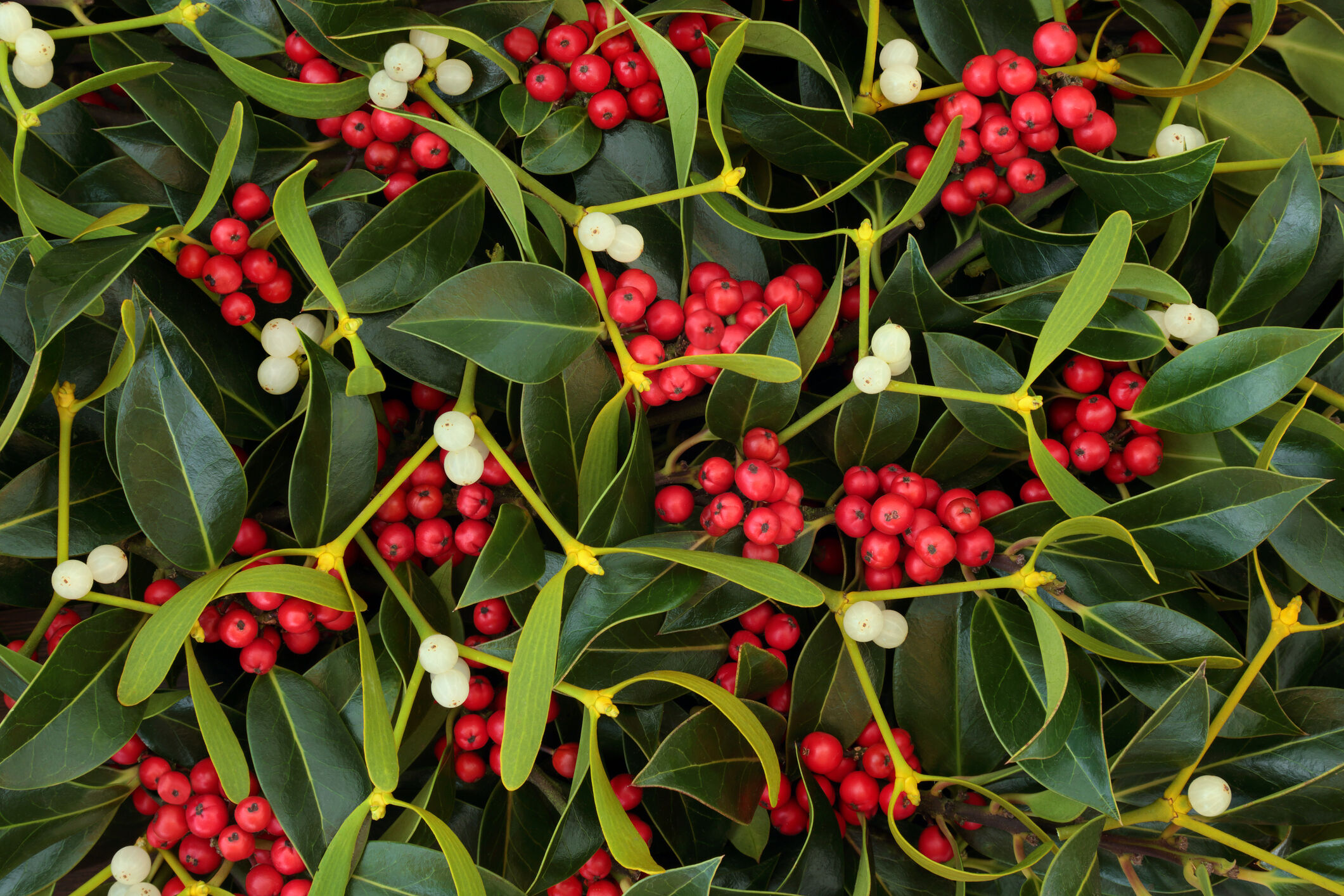
Introduction
Mistletoe is a plant that is commonly associated with the winter holidays, especially with Christmas. It is often used as a decoration during this time of the year, and it is also a popular tradition to kiss under the mistletoe. However, not many people know where mistletoe comes from and what its history is.
The Origin of Mistletoe
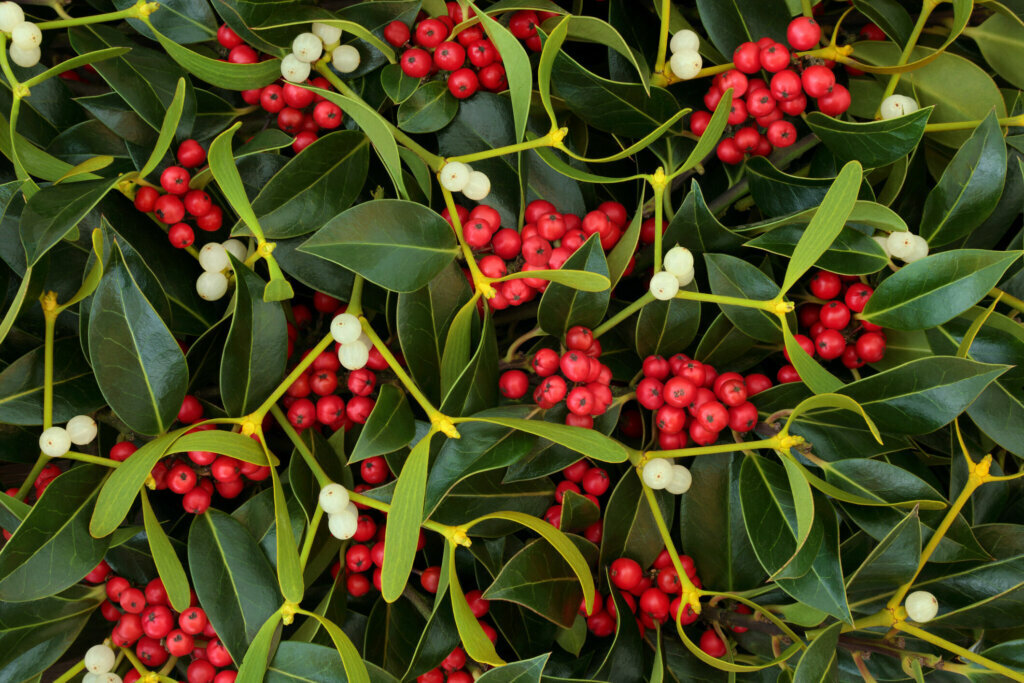
Mistletoe is actually a parasitic plant that grows on trees. It has been around for thousands of years, and it is believed to have originated in Europe. The ancient Druids, who were the priests of the Celtic people, considered mistletoe to be a sacred plant that had magical properties. They used it in their rituals and believed that it could cure illnesses and bring good luck.
Mistletoe in Mythology

In Norse mythology, mistletoe was associated with the god Balder, who was the god of light and purity. According to the myth, Balder was killed by an arrow made of mistletoe. This is why mistletoe is considered to be a symbol of love and friendship, as well as a symbol of death and rebirth.
Mistletoe in Christianity

Mistletoe also has a significant role in Christianity. It is believed that mistletoe was once a tree, but it was cursed and turned into a parasite. However, it was redeemed when it was used to make the cross on which Jesus was crucified. Since then, mistletoe has been a symbol of forgiveness and reconciliation.
Types of Mistletoe
There are over 1,000 species of mistletoe, but the most commonly used for Christmas decorations is the European mistletoe (Viscum album). It has white berries and grows on deciduous trees such as oak, apple, and hawthorn. The American mistletoe (Phoradendron leucarpum) has similar properties, but it has shorter leaves and grows on evergreen trees such as pine and cedar.
Harvesting Mistletoe

Mistletoe is harvested in the winter when the leaves have fallen off the trees. It is important to be careful when harvesting mistletoe, as it can be toxic if ingested. The best way to harvest it is to cut the stem with a sharp knife, leaving a small piece of the plant on the tree to allow it to regrow.
The Tradition of Kissing Under the Mistletoe

The tradition of kissing under the mistletoe dates back to the ancient Druids. It was believed that if a man and a woman met under the mistletoe, they had to kiss. If they did not, they would have bad luck. This tradition has continued to this day, and it is now a popular Christmas tradition.
Uses of Mistletoe
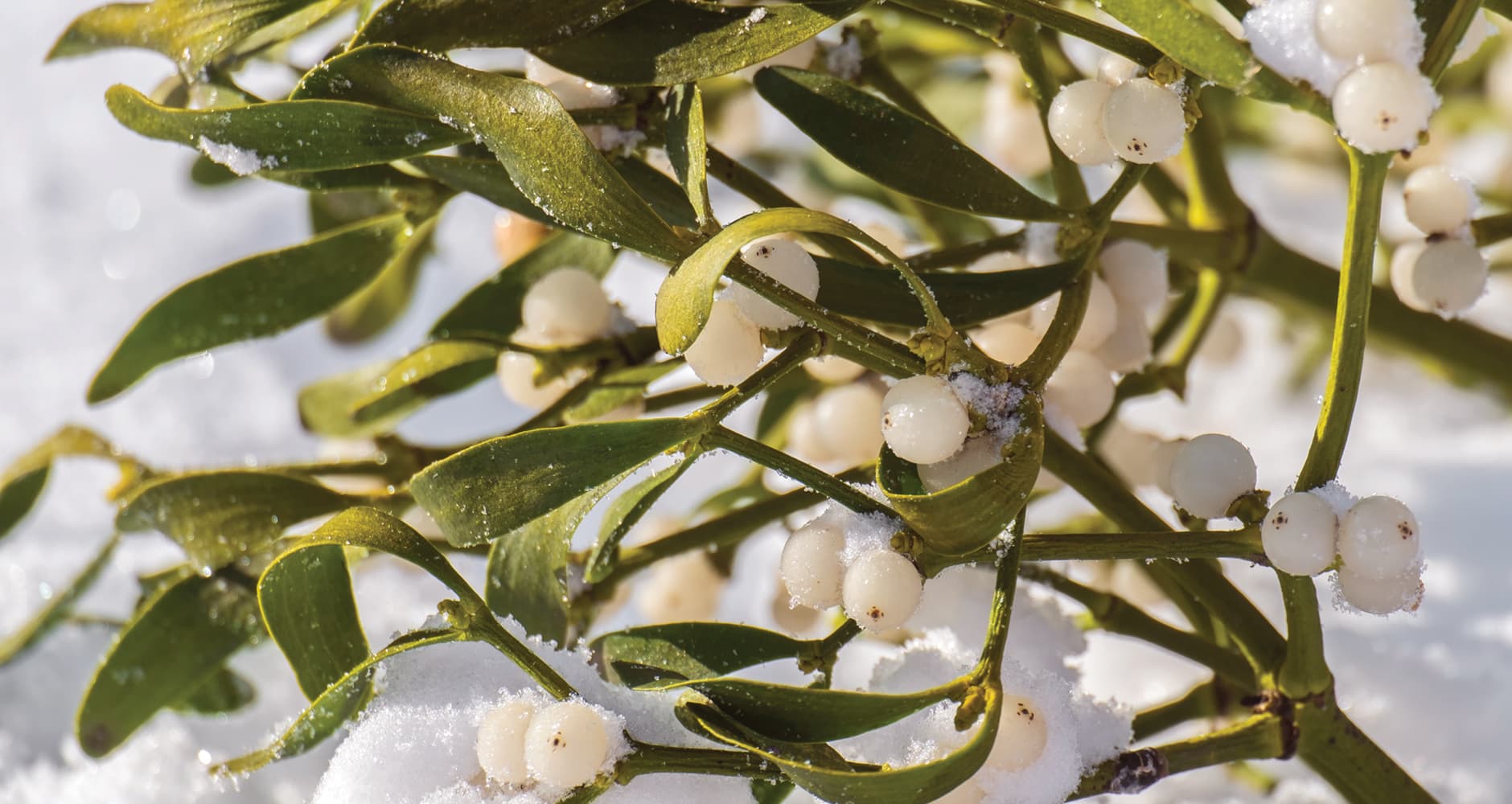
Aside from being used as a decoration and a symbol of love and friendship, mistletoe also has medicinal properties. It has been used to treat high blood pressure, epilepsy, and arthritis. It is also believed to have anti-cancer properties, but more research is needed to confirm this.
Conclusion
Mistletoe is a fascinating plant with a rich history and many uses. Whether you use it as a decoration, a symbol of love and friendship, or for its medicinal properties, mistletoe is a plant that has something to offer everyone.
Related video of Where Does Mistletoe Come From
The phrase “Let them eat cake” is one of the most famous quotes in history. It is often attributed to Marie Antoinette, the Queen of France during the French Revolution. The phrase is commonly used to describe a callous and insensitive attitude towards the poor. But where did this phrase come from? Was Marie Antoinette really the one who said it?
The Origins of the Phrase

The origins of the phrase are somewhat murky, but it is believed to have been popularized by Jean-Jacques Rousseau in his autobiography, “Confessions.” In the book, Rousseau tells a story about a “great princess” who, upon learning that the peasants had no bread, exclaimed, “Let them eat brioche.”
It is unclear whether the story is true or not, but it is often attributed to Marie Antoinette, who was known for her extravagant lifestyle and perceived indifference towards the plight of the poor.
The Life of Marie Antoinette

Marie Antoinette was born in Austria in 1755 and was married to the future King Louis XVI of France at the age of 14. She was known for her beauty and charm, but also for her extravagant spending and lavish lifestyle.
During her time as Queen of France, Marie Antoinette was often criticized for her perceived indifference towards the plight of the poor. She was known for throwing lavish parties and spending vast amounts of money on clothes and jewelry, while many of her subjects were suffering from poverty and famine.
The French Revolution
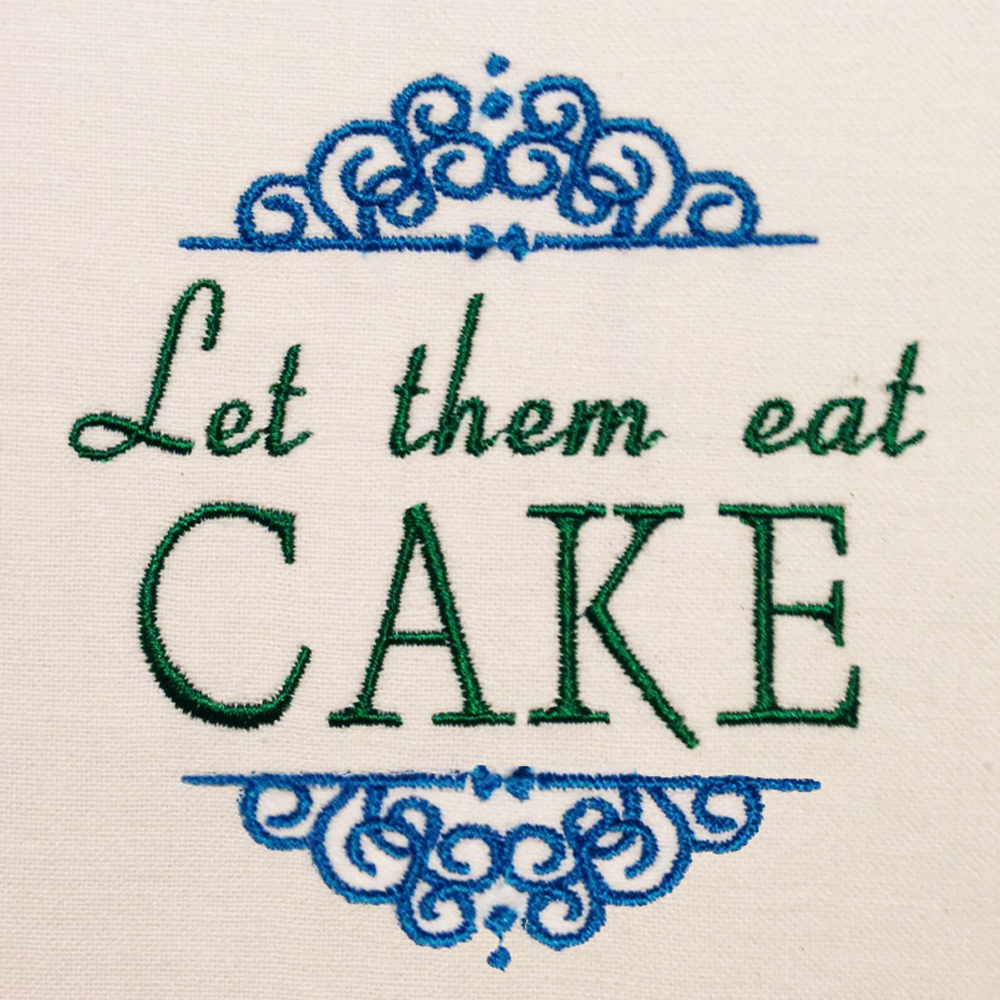
The French Revolution began in 1789, fueled by anger towards the monarchy and the perceived injustices of the French social system. Marie Antoinette and her husband, King Louis XVI, were eventually captured and executed by the revolutionaries.
The phrase “Let them eat cake” is often cited as an example of the callous and insensitive attitude of the French monarchy towards the suffering of the poor. However, it is important to note that there is no historical evidence to suggest that Marie Antoinette actually said these words.
The Legacy of the Phrase

The phrase “Let them eat cake” has become a symbol of the excesses and injustices of the French monarchy. It is often used to criticize the wealthy and powerful for their perceived indifference towards the struggles of the poor.
While it is unclear whether Marie Antoinette actually said these words, her legacy as a symbol of extravagance and indifference towards the poor has endured to this day.
Conclusion
“Let them eat cake” is one of the most famous phrases in history, often attributed to Marie Antoinette, the Queen of France during the French Revolution. While the origins of the phrase are somewhat murky, it has become a symbol of the excesses and injustices of the French monarchy, and the callous attitude of the wealthy towards the poor.
Related video of Where Does Let Them Eat Cake Come From?

Introduction
Ice cream is one of the most popular desserts in the world. It's hard to imagine life without this creamy, delicious treat. But have you ever wondered where ice cream comes from originally? The history of ice cream is a fascinating one that spans centuries and continents. In this article, we'll explore the origins of ice cream and how it evolved into the beloved dessert we know today.Ancient Origins
The origins of ice cream can be traced back to ancient China. It is believed that ice cream was first created during the Tang Dynasty (618-907 AD). Chinese nobility enjoyed a dessert made from buffalo milk, flour, and camphor. This mixture was then packed in ice and salt to create a frozen treat.The Spread of Ice Cream
From China, ice cream spread to other parts of the world. Arab traders brought it to the Middle East, where they added sugar and fruit to the mixture. The Moors, who conquered Spain in the 8th century, introduced ice cream to Europe. The Europeans then added different flavors to it, such as vanilla and chocolate.American Innovation
In America, ice cream became popular during the colonial period. Ice cream was a luxury item reserved for the wealthy, who had access to ice houses where the dessert could be stored. However, during the 19th century, ice cream became more accessible due to the invention of the hand-cranked ice cream churn. This made it possible for people to make ice cream at home.Industrial Revolution
The industrial revolution brought significant changes to the ice cream industry. Ice cream became more affordable and accessible to the masses due to the invention of the ice cream machine. This machine made it possible to produce large quantities of ice cream quickly and efficiently.Modern Innovations
Ice cream has continued to evolve over the years. Today, there are countless flavors and varieties of ice cream available. Some of the most popular include chocolate, vanilla, and strawberry. There are also non-dairy options, such as soy and almond milk ice cream.The Future of Ice Cream
The future of ice cream looks bright. As technology continues to advance, we can expect to see even more innovations in the ice cream industry. From new flavors to new production methods, the possibilities are endless.Conclusion
In conclusion, ice cream has a long and fascinating history that spans centuries and continents. From its humble beginnings in ancient China to its modern-day popularity, ice cream has captured the hearts and taste buds of people all over the world. Whether you prefer classic flavors or something more out of the box, there's no denying that ice cream is a beloved dessert that will continue to be enjoyed for generations to come.Related video of Where Does Ice Cream Come From Originally?

Circumcision is a surgical procedure that involves the removal of the foreskin covering the head of the penis. It is a common practice among many cultures and religions around the world. But where does circumcision originate? Let's take a look at the history and evolution of this practice.
Origins of Circumcision

The origin of circumcision is not entirely clear, but it is believed to have started in ancient Egypt around 2300 BCE. It was a rite of passage for young men and was performed as a symbol of purification and initiation into manhood. The Egyptians believed that circumcision was a way to prevent infection and promote hygiene in the arid desert environment.
The practice of circumcision then spread to other cultures, including the Jewish and Islamic faiths. According to the Jewish tradition, circumcision was first performed by Abraham, the father of the Jewish people, as a sign of his covenant with God. Muslims also practice circumcision as a way to follow the example of the Prophet Muhammad.
Circumcision in Western Culture

In Western culture, circumcision was not widely practiced until the late 19th century. At that time, doctors believed that circumcision could prevent a variety of health problems, including masturbation, syphilis, and other sexually transmitted diseases. This led to the widespread adoption of circumcision in the United States and other Western countries.
Today, circumcision is still practiced for medical and cultural reasons. In some African countries, circumcision is used as a way to prevent the spread of HIV/AIDS. In other cultures, circumcision is seen as a way to promote hygiene and prevent infection.
Controversy Surrounding Circumcision

Despite its widespread use, circumcision is a controversial practice. Some argue that it is a violation of human rights and can cause physical and psychological harm. Others believe that it is a necessary procedure for medical or cultural reasons.
The debate over circumcision has led to a growing movement against the procedure, particularly in Western countries. Some argue that circumcision should be a personal choice rather than a cultural or religious tradition.
Conclusion
In conclusion, the origins of circumcision can be traced back to ancient Egypt, where it was performed as a symbol of purification and initiation into manhood. Today, circumcision is practiced for medical and cultural reasons around the world. While it remains a controversial practice, it is important to respect different cultural and religious traditions and to make informed decisions about our own health and well-being.
Related video of Where Does Circumcision Originate?
Wedding rings are a symbol of love and commitment between two people. They are often worn every day for the rest of your life, so it's essential to know how to wear them correctly. But where exactly do you wear your wedding ring?
Left or Right?

The traditional wedding ring is worn on the left hand's fourth finger, also known as the ring finger. This tradition dates back to ancient Rome, where it was believed that the vein in the fourth finger of the left hand led directly to the heart.
However, in some cultures, the wedding ring is worn on the right hand instead. For example, in many European countries, including Germany, Austria, and Norway, the wedding ring is worn on the right hand. In Brazil and Colombia, it's also common to wear the wedding ring on the right hand.
Engagement Ring and Wedding Band
Many couples choose to wear both an engagement ring and a wedding band. In this case, the engagement ring is typically worn on the same finger as the wedding band, with the wedding band closest to the hand.
However, some people choose to wear their engagement ring on a different finger, such as the middle finger or the opposite hand, to give the wedding band more prominence.
Same-Sex Couples

Same-sex couples may choose to wear their wedding rings on the same finger as traditional couples or on a different finger, depending on personal preference.
Some same-sex couples may also choose to wear engagement rings or wedding bands that are specifically designed for same-sex couples, such as rings with two interlocking pieces that only fit together when worn by two people.
Other Considerations

When deciding where to wear your wedding ring, there are a few other things to consider:
- If you have a job that requires you to use your hands frequently or wear gloves, you may want to consider wearing your wedding ring on a different finger or hand to protect it.
- If you have a particularly large or small ring size, you may need to have your wedding ring resized to ensure a comfortable fit.
- If you have a unique or unconventional style, you may want to consider a non-traditional wedding ring, such as one made of a different metal or with a unique design.
Conclusion
Ultimately, where you wear your wedding ring is a personal choice. Whether you choose to follow tradition or create your own unique style, your wedding ring is a symbol of your love and commitment to your partner.
Related video of Where Do You Wear A Wedding Ring
Swiss cheese is known for its distinct flavor and characteristic holes. But have you ever wondered where those holes come from?
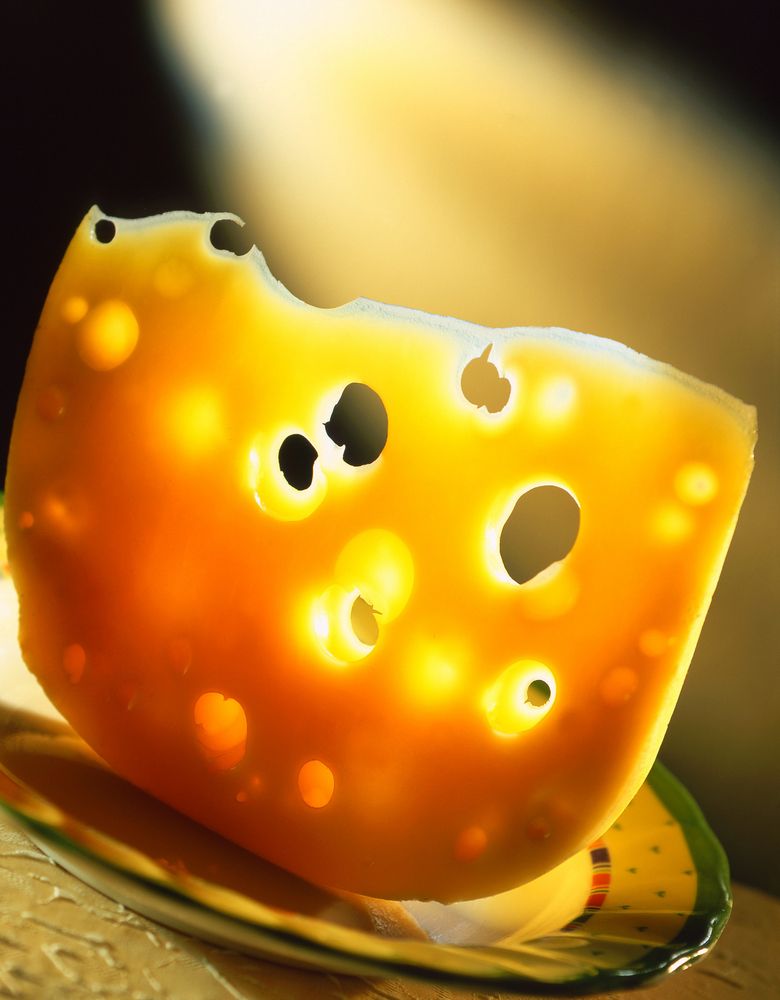
The Science Behind the Holes
The holes in Swiss cheese, also known as "eyes," are actually pockets of carbon dioxide gas. During the cheese-making process, bacteria consume the lactose in the milk and produce lactic acid. This causes the pH of the cheese to drop, which triggers the release of carbon dioxide gas.
As the cheese curd is heated and stretched, the gas gets trapped in the cheese, forming the characteristic holes. The size and distribution of the holes depend on a variety of factors, including the type of bacteria used, the temperature and humidity during cheese-making, and the length of the aging process.

The History of Swiss Cheese
Swiss cheese has been around for centuries and is believed to have originated in the Swiss Alps. It was traditionally made by mountain herdsmen who would bring their cows down from the high pastures in the summer to make cheese for the winter months.
The first written mention of Swiss cheese dates back to the 15th century, and by the 18th century, it had become a popular export throughout Europe. Today, Swiss cheese is produced all over the world, with variations in flavor and texture depending on the region and cheese-making techniques.
/GettyImages-71285433-57ec06383df78c690f425031.jpg)
The Different Types of Swiss Cheese
There are several different types of Swiss cheese, each with its own unique flavor and texture. Here are a few of the most popular:
Emmental
Emmental is a classic Swiss cheese with large, irregular holes and a nutty, slightly sweet flavor. It is often used in sandwiches and fondue.

Gruyère
Gruyère is a semi-hard cheese with smaller holes and a rich, earthy flavor. It is often used in cooking, particularly in quiches and gratins.

Raclette
Raclette is a creamy, semi-soft cheese that is often melted and served over potatoes or other vegetables. It has a mild, slightly nutty flavor.

Caring for Swiss Cheese
To keep your Swiss cheese fresh and flavorful, it's important to store it properly. Here are a few tips:
- Wrap the cheese in wax paper or parchment paper, then place it in a plastic bag or airtight container.
- Store the cheese in the coldest part of the refrigerator, such as the bottom shelf or the meat drawer.
- Take the cheese out of the refrigerator about an hour before serving to allow it to come to room temperature and enhance its flavor.

Conclusion
Now that you know where the holes in Swiss cheese come from, you can appreciate this delicious cheese even more. Whether you prefer Emmental, Gruyère, or Raclette, there's no denying the unique flavor and texture of Swiss cheese.
Related video of Where Do The Holes In Swiss Cheese Come From
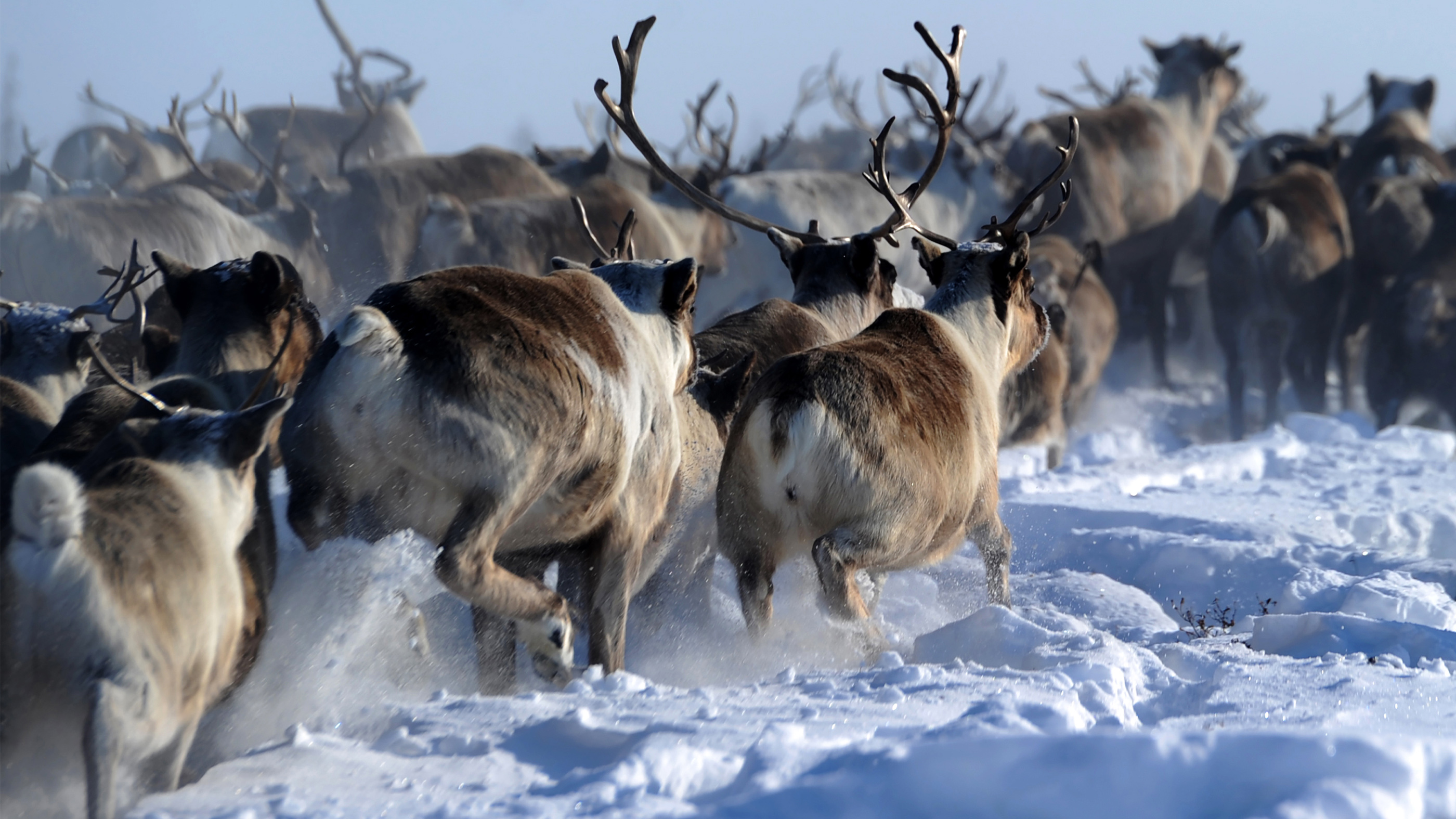
Reindeer are fascinating creatures that are known for their ability to thrive in cold and harsh climates. These animals are found in many parts of the world, including Canada. In this article, we will explore the habitat of reindeer in Canada and some interesting facts about these animals.
What Are Reindeer?

Reindeer, also known as caribou, are a species of deer that are native to northern regions of North America, Europe, and Asia. They are well adapted to living in cold environments and have many unique characteristics that help them survive in these conditions.
Reindeer Habitat in Canada

Reindeer are found in many parts of Canada, particularly in the northern regions of the country. These areas include the Arctic tundra, boreal forests, and mountainous regions. Some of the provinces and territories where reindeer can be found include Quebec, Newfoundland and Labrador, Nunavut, and the Northwest Territories.
Reindeer are also commonly found in Canada's national parks, including Auyuittuq National Park in Nunavut, where visitors can see these animals in their natural habitat.
Adaptations of Reindeer in Canada

Reindeer have several unique adaptations that allow them to survive in the harsh conditions of Canada's northern regions. These include:
- Thick fur that insulates them from the cold
- Large hooves that help them walk on snow and ice
- The ability to lower their body temperature during periods of extreme cold
- An efficient digestive system that allows them to extract nutrients from tough plants that grow in the tundra
Reindeer Migration in Canada
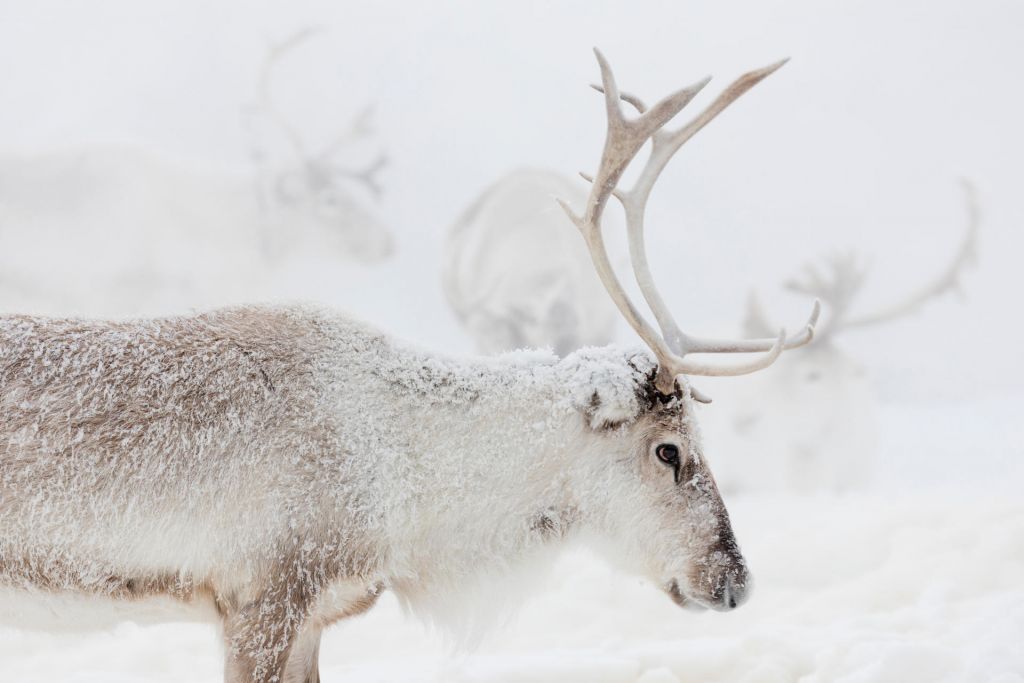
One of the most fascinating things about reindeer in Canada is their annual migration. During the summer months, reindeer move to higher elevations in the mountains to graze on the tundra. As winter approaches, they move back to lower elevations to avoid deep snow and to find food.
Reindeer are also known for their long-distance migrations, which can cover thousands of kilometers. In the winter, they often travel in large herds, which helps protect them from predators like wolves and bears.
Conclusion
Reindeer are a unique and fascinating species that are well adapted to living in the cold and harsh conditions of Canada's northern regions. With their thick fur, large hooves, and efficient digestive system, these animals are perfectly suited to survive in the tundra and boreal forests of the country. Whether you're a wildlife enthusiast or just someone who appreciates the natural beauty of Canada, seeing a reindeer in its natural habitat is an experience you won't soon forget!
Related video of Where Do Reindeer Live In Canada?

Piranhas are fish that are infamous for their razor-sharp teeth and ferocious reputation. They are often viewed as a dangerous predator, and many people wonder where they live. In this article, we will explore the habitat of piranhas and where they can be found.
What are Piranhas?

Piranhas are a type of freshwater fish that are known for their sharp teeth and aggressive behavior. They are native to South America and are found in rivers, lakes, and other bodies of water. There are over 30 species of piranhas, and they vary in size and color.
Habitat of Piranhas
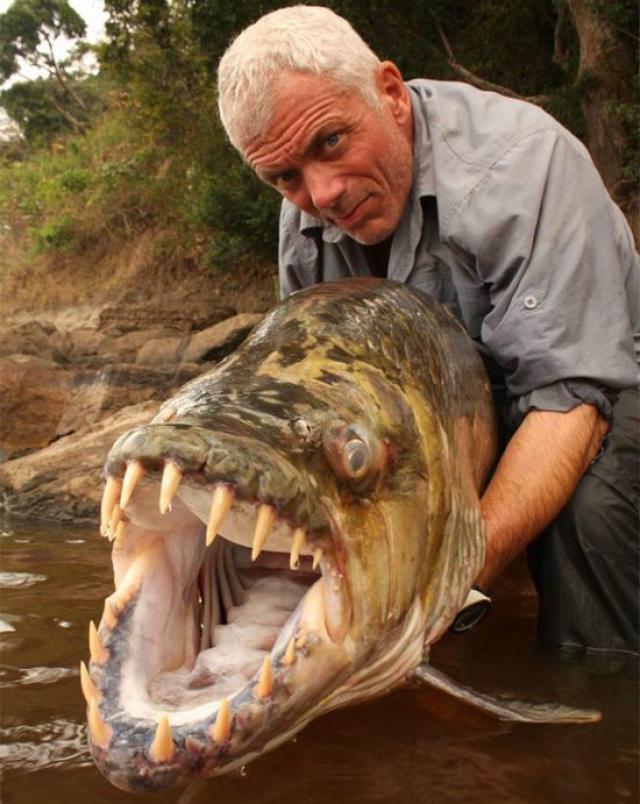
Piranhas are found in the rivers and lakes of South America, primarily in the Amazon Basin. They are also found in other rivers and lakes in South America, including the Orinoco, Paraguay, and Paraná River systems. Piranhas prefer warm, shallow waters with plenty of vegetation and prey.
Types of Piranhas and Their Habitat

There are over 30 species of piranhas, each with its own unique habitat. Some of the most common species of piranhas include the red-bellied piranha, black piranha, and yellow piranha.
The red-bellied piranha is one of the most well-known species of piranhas. They are found in the Amazon Basin and other rivers in South America. They prefer to live in slow-moving rivers and flooded forests.
The black piranha is the largest species of piranha and can be found in the Amazon Basin and other rivers in South America. They prefer to live in deep, clear waters with plenty of cover.
The yellow piranha is found in the rivers and streams of Brazil and Venezuela. They prefer to live in slow-moving waters with plenty of vegetation and prey.
Piranhas in Aquariums
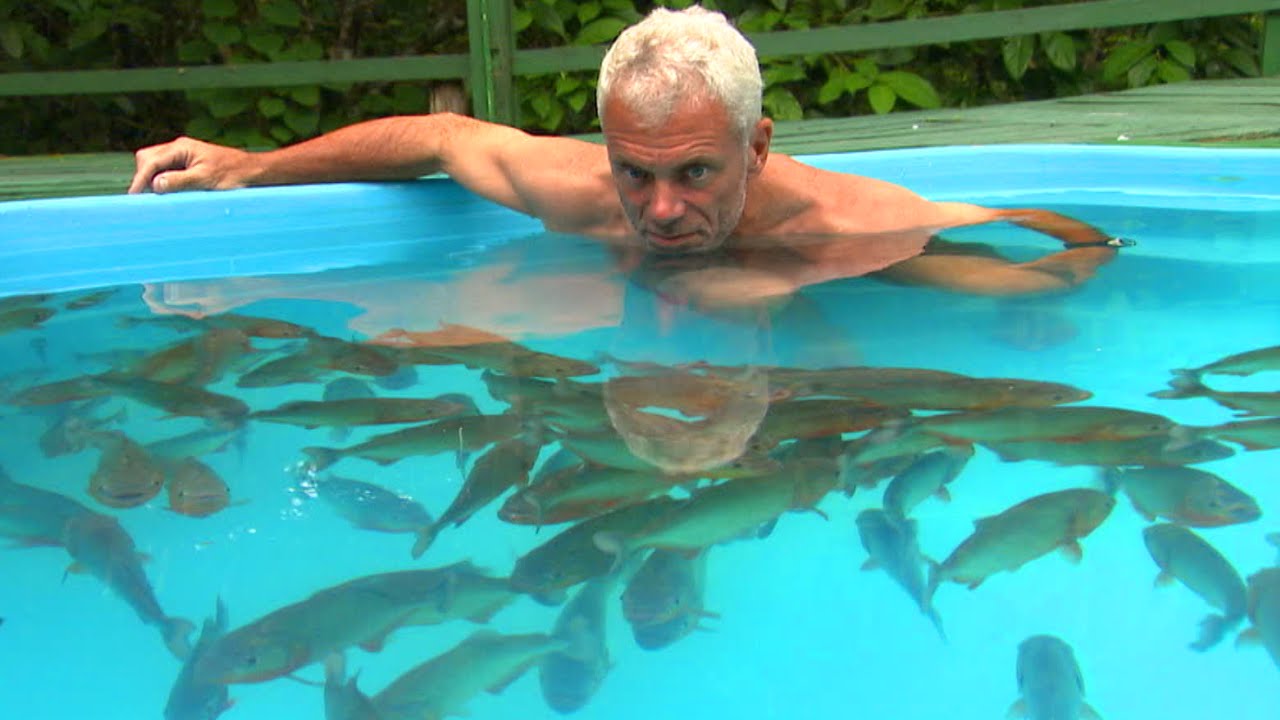
Many people keep piranhas in aquariums as pets. However, it is important to note that piranhas are not a good choice for beginner fish keepers. Piranhas require a large tank with plenty of hiding spaces and a varied diet.
The Role of Piranhas in the Ecosystem

Piranhas play an important role in the ecosystem of the Amazon Basin. They are a top predator and help to keep populations of other fish in check. Piranhas also play a role in nutrient cycling by consuming dead animals and recycling nutrients back into the ecosystem.
Threats to Piranhas
Like many other species of fish, piranhas are threatened by overfishing and habitat destruction. In some areas, piranhas are caught for food and sport, and their populations are declining as a result. Habitat destruction, such as deforestation and dam construction, also threatens the survival of piranhas.
Conclusion
Piranhas are fascinating fish that are known for their sharp teeth and aggressive behavior. They are found in the rivers and lakes of South America and play an important role in the ecosystem. Although they are often viewed as a dangerous predator, piranhas are an important part of the Amazon Basin and must be protected.
Related video of Where Do Piranhas Live?

If you love seafood, you might have tasted the delicious and succulent meat of a lobster. These crustaceans are highly prized for their sweet and tender meat, and they live in a variety of habitats around the world. In this article, we'll explore where lobsters live and what kind of environments they prefer.
Coastal Waters
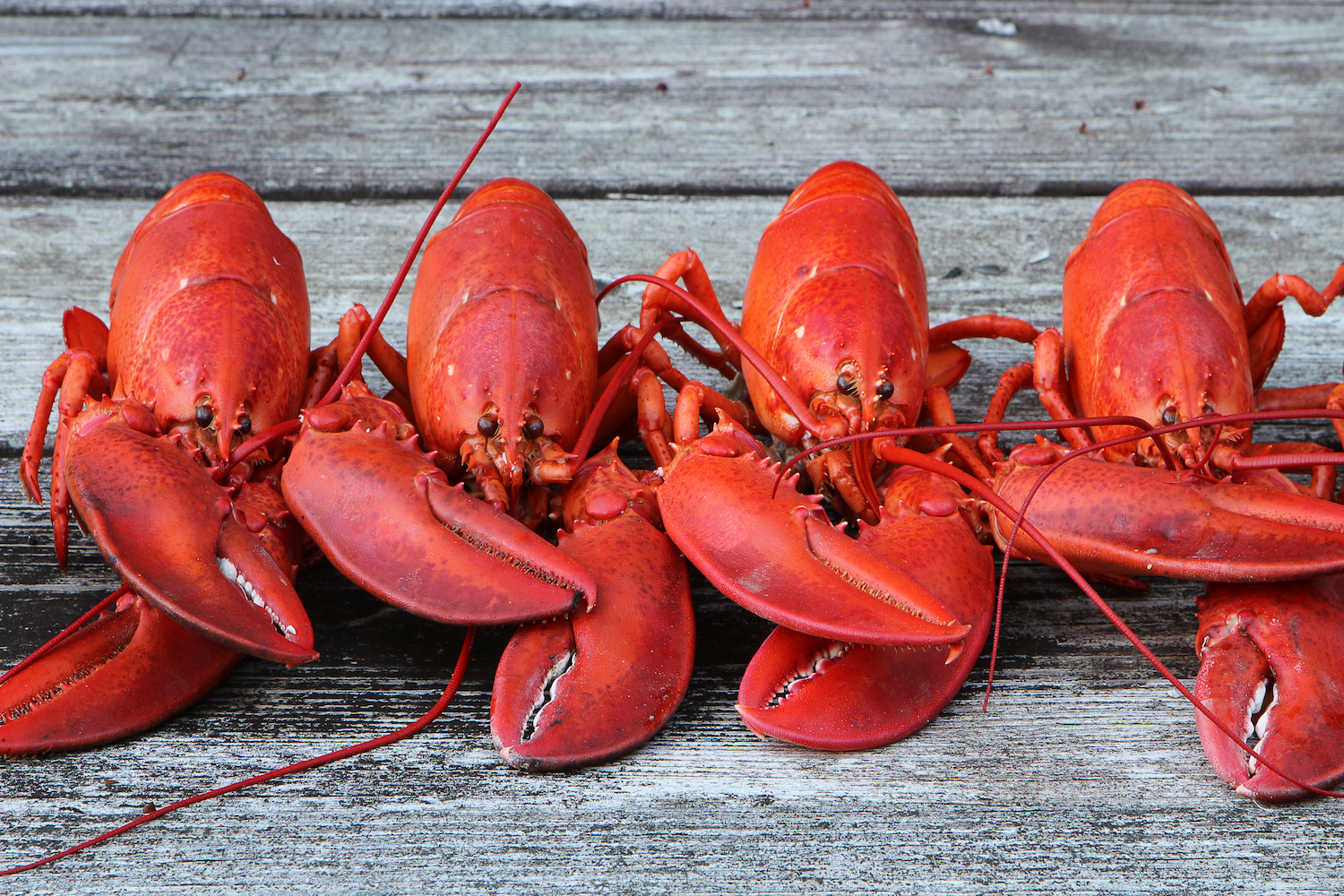
Lobsters are primarily found in coastal waters, where they can hide in rocky crevices, caves, and other structures. These structures provide shelter and protection from predators, as well as a place to lay their eggs. Lobsters prefer to live in water that is between 45 and 65 degrees Fahrenheit, and they are most commonly found in waters that are between 20 and 60 feet deep.
Rocky Seabeds
Lobsters are also found in rocky seabeds, where they can burrow into the sand and gravel. These areas are often rich in food sources, such as crabs, clams, and other small marine animals. Lobsters can also be found in areas with rocky outcrops and boulder fields, where they can hide and feed.
Cold Water Environments

Lobsters are cold-water animals and prefer to live in environments that are between 45 and 65 degrees Fahrenheit. They can be found in waters as far north as the Arctic and as far south as the Caribbean. In colder waters, lobsters tend to grow more slowly, but they also tend to live longer and have a better chance of reproducing.
Artificial Habitats
Lobsters are adaptable creatures and can also be found in artificial habitats, such as lobster traps and aquaculture farms. These habitats provide a steady supply of food and protection from predators, but they can also pose a threat to wild lobster populations if not managed properly.
Conclusion
In summary, lobsters are found in a variety of habitats around the world, but they prefer coastal waters, rocky seabeds, and cold-water environments. They are adaptable creatures and can also be found in artificial habitats, such as lobster traps and aquaculture farms. Whether you enjoy lobster as a delicacy or simply admire these fascinating creatures, it's important to understand where they live and how they survive in their natural habitats.
Related video of Where Do Lobsters Live?
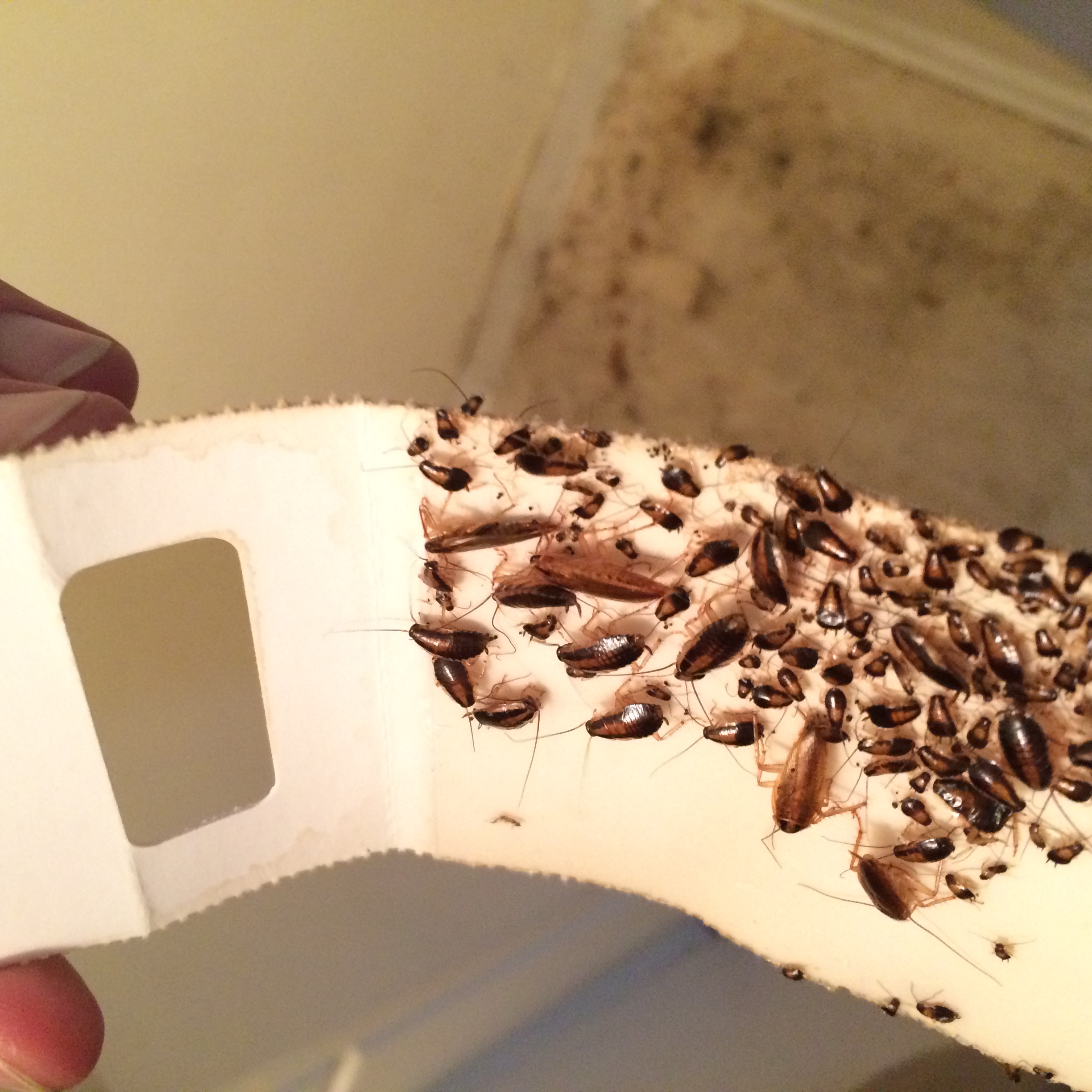
Introduction
Cockroaches are one of the most common pests found in homes and buildings. They are known for their ability to survive in harsh conditions and their quick reproductive rate. Cockroaches are nocturnal creatures and are most active at night. They can hide in many places in your home, making it difficult to get rid of them. This article will discuss where cockroaches hide and how to prevent them from entering your home.
Kitchen
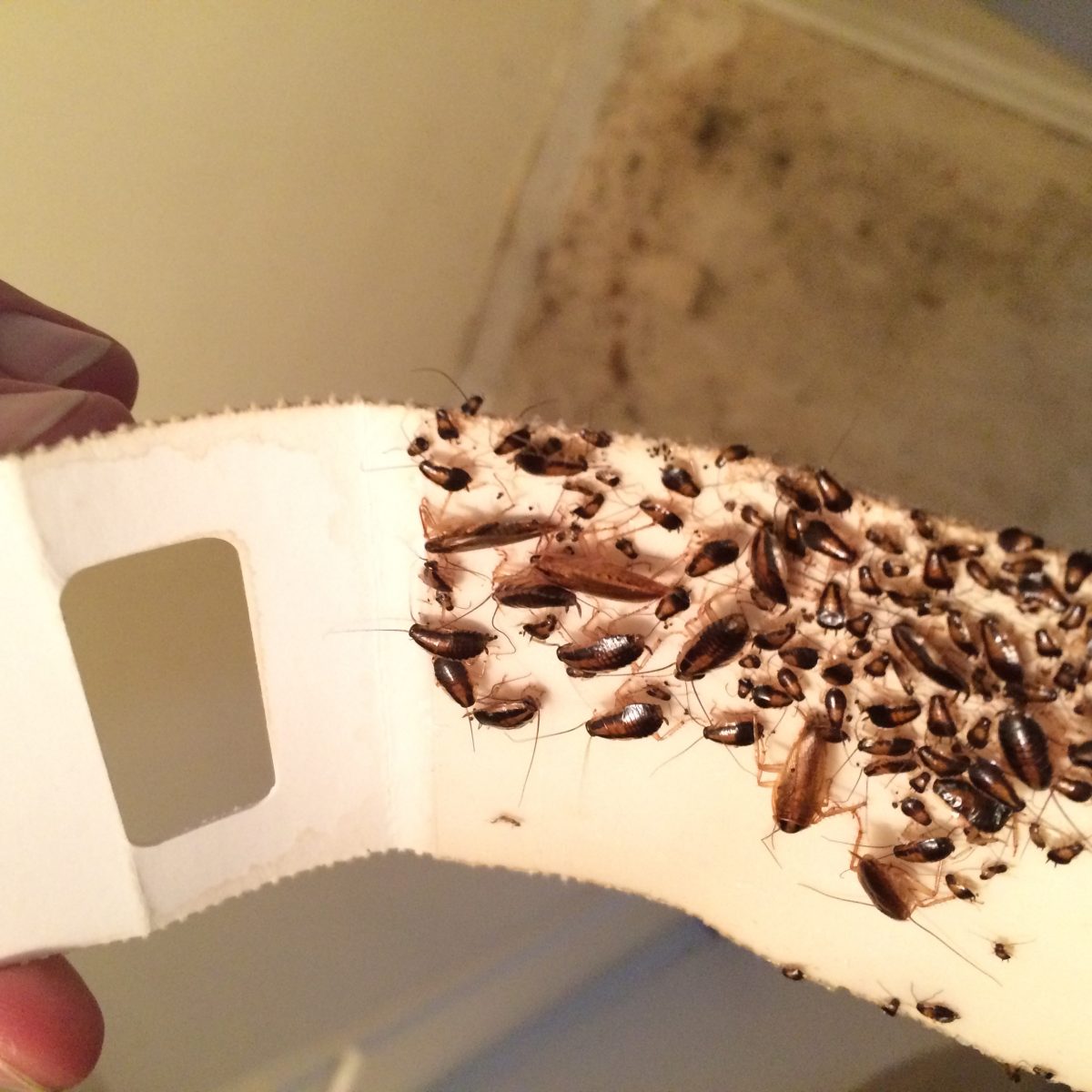
The kitchen is the most common area where cockroaches hide. They are attracted to food and moisture, which can be found in the kitchen. Cockroaches can hide in cabinets, drawers, and even appliances such as the refrigerator and microwave. They can also hide in cracks and crevices around the sink and countertops.
Bathroom

Cockroaches are also commonly found in the bathroom. They are attracted to moisture, which can be found in areas like the sink, shower, and toilet. Cockroaches can hide in cracks and crevices around the bathroom, and they may also hide in the drains.
Bedroom
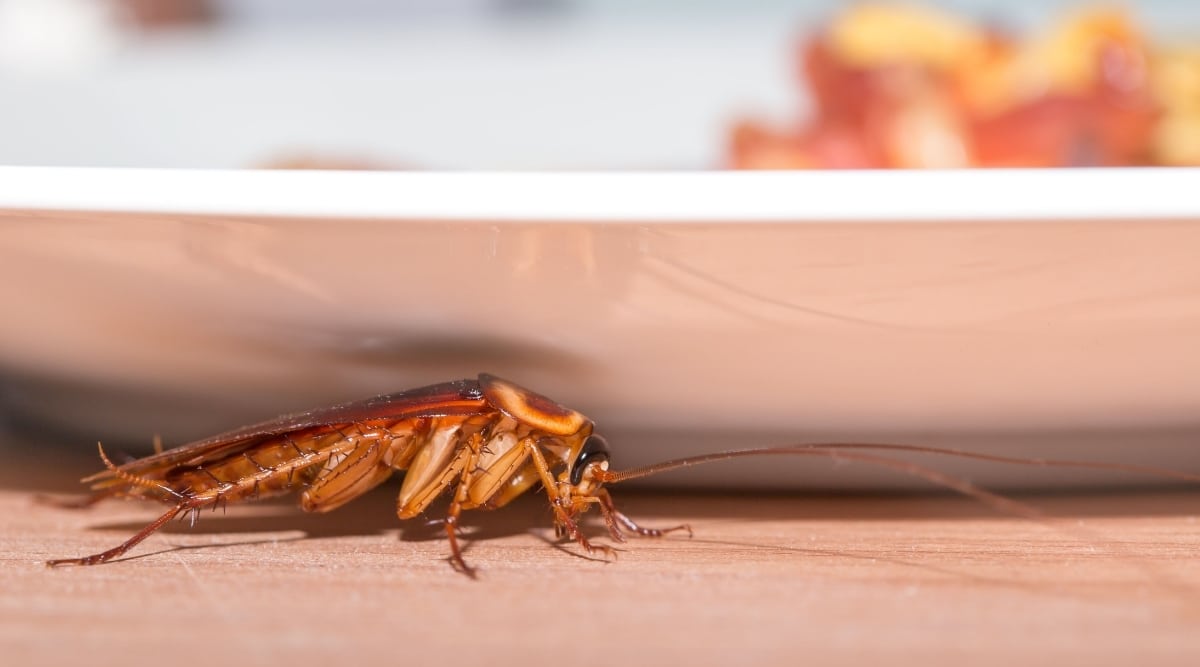
While cockroaches are not commonly found in the bedroom, they can still hide there. They may hide in the cracks and crevices around the bed or in the furniture. If you have clutter in your room, this can also provide hiding places for cockroaches.
Basement

The basement is another area where cockroaches can hide. They can hide in boxes or other clutter that is stored in the basement. Cockroaches can also hide in cracks and crevices in the walls or floors.
Garage

Cockroaches can also be found in the garage. They may hide in boxes or other clutter that is stored in the garage. Cockroaches can also hide in cracks and crevices in the walls or floors of the garage.
Prevention

Preventing cockroaches from entering your home is the best way to avoid an infestation. Here are some tips to prevent cockroaches:
- Keep your home clean and free from clutter.
- Store food in sealed containers.
- Fix any leaks or moisture problems in your home.
- Seal any cracks or crevices in your home.
- Use airtight screens on windows and doors.
- Regularly clean your drains to prevent cockroaches from hiding there.
Conclusion
Cockroaches can hide in many places in your home, making it difficult to get rid of them. The best way to prevent cockroaches is to keep your home clean and free from clutter, store food in sealed containers, and fix any leaks or moisture problems in your home. By following these tips, you can prevent cockroaches from entering your home and avoid an infestation.